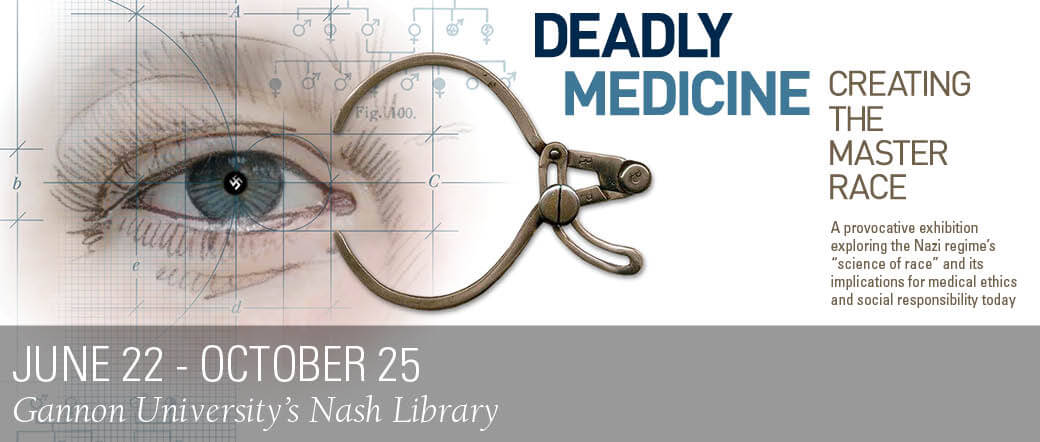Erie, Pa.—The United States Holocaust Memorial Museum’s traveling exhibition Deadly Medicine: Creating the Master Race examines how the Nazi leadership, in collaboration with individuals in professions traditionally charged with healing and the public good, used science to help legitimize persecution, murder, and ultimately, genocide.
The exhibition opens at Gannon University’s own Nash Library on June 22, 2015 and will be on display through October 28, 2015.
“Deadly Medicine explores the Holocaust’s roots in then-contemporary scientific and pseudo-scientific thought,” explains exhibition curator Susan Bachrach. “At the same time, it touches on complex ethical issues we face today, such as how societies acquire and use scientific knowledge and how they balance the rights of the individual with the needs of the larger community.”
Eugenics theory sprang from turn-of-the-20th-century scientific beliefs asserting that Charles Darwin’s theories of “survival of the fittest” could be applied to humans. Supporters, spanning the globe and political spectrum, believed that through careful controls on marriage and reproduction, a nation’s genetic health could be improved.
The Nazi regime was founded on the conviction that “inferior” races, including the so-called Jewish race, and individuals had to be eliminated from German society so that the fittest “Aryans” could thrive. The Nazi state fully committed itself to implementing a uniquely racist and anti-Semitic variation of eugenics to “scientifically” build what it considered to be a “superior race.” By the end of World War II, six million Jews had been murdered. Millions of others also became victims of persecution and murder through Nazi “racial hygiene” programs.
“Booked years in advance by universities and museums across the United States, Europe, and Israel, this traveling exhibit is a quite literally a once in a lifetime opportunity,” said Gannon’s own Dr. Jeff Bloodworth, head of the history and archaeology department. “Gannon is rightly proud to host this most extraordinary museum exhibition.”
Deadly Medicine takes approximately one hour to tour and will be open during the library’s normal working hours. It is free to the public. A number of supporting videos are available online at www.ushmm.org. By giving historical context to the Holocaust, framing questions about the value of human life and presenting commentary from several Holocaust survivors, these videos can lend themselves to a wide array of assignments in many majors.
To schedule a tour for a group, please contact Caroline DiPlacido by phone at 871-5816 or via email at diplacid005@gannon.edu


0 Comments